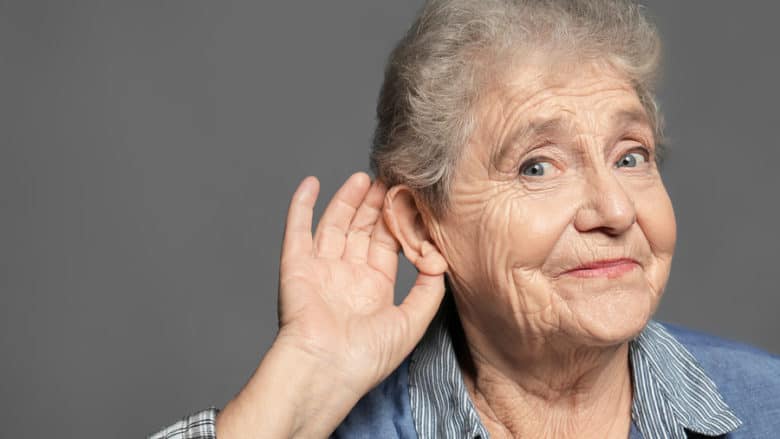
Hearing loss sneaks up on you. Most often, you don’t realize it until family, friends, customers, or your boss complain that you’re not paying attention to them.
It’s too darn bad because often it’s preventable as in Tom’s case.
Jim was about to blow after being ignored once again after asking his teenage son, Tom, to take out the garbage. When he grabbed Tom’s arm to turn him toward him, he realized Tom hadn’t heard a word he said.
Tom’s lack of hearing was in part being a tuned-in teenager, but later he found out there was some permanent hearing loss too.
Like many teenagers, Tom spent most of his time with an earphone in his ear, listening to music, and playing games.
The level of sound generated through earphones, personal listening devices (PLDs) is but one of a growing number of ways you can unknowingly damage hearing with technology enhanced devices and events.
Most of us enjoy the cool tools and toys that technology provides — it’s hard to imagine a world without them. The good news is that you don’t have to stop having fun to protect your hearing.
In most cases you can continue to enjoy these devices and events with these simple preventive measures gleamed from hearing loss expert Brian Fligor, ScD, in The Consumer Handbook on Hearing Loss and Noise
Hearing Loss Prevention Tips
The most frequent recreational hearing robbing culprits include use of firearms, woodworking, motor sports, sporting events, noisy toys, and music (including CD and cassette audio players, MP3 players, and music events).
The loudness (measured in decibels) of the device or event contributes mightily to the damage.
However, most of us don’t have the equipment or know how to measure sound levels so experts advise protecting yourself by taking control of “how long” and “how often” you’re exposed to the sound.
- CD and Cassette Audio Players — Use the “60-60 Rule:” Limit listening level to 60 % of the maximum volume for 60 minutes a day. If using earbuds, lower the listening level below 60% or listen less than 60 minutes a day.
- MP3 Players — Use the “80-90 Rule:” Limit the volume to 80 percent of maximum and listen no longer than 90 minutes a day if using earbuds. The sound levels for these devices are generally lower than that of CD and tape players.Be careful though. The portability of these devices makes it easy to lose track of time and end up using them longer then recommended. Users also tend to increase the volume to accommodate for background noise (like car or crowd noise) not realizing they’re in the danger zone.
- Music Events — Avoid The Loud Ones and Limit Time: Music sound levels at rock concerts typically register at 103 dBA with crowd noise registering at 100 dBA. Plus, sound engineers target the volume at their location at 104 dBA in order to hear over the other noise.This level of sound exposure probably will not harm hearing when it’s a rare event, but frequent exposures may cause permanent hearing damage reports Fligor. He also notes it is possible to develop permanent hearing damage after a single, very high exposure.Visit the Hearing Education and Awareness for Rockers site (www.hearnet.com) for more hearing information for musicians and music lovers.
- Avoid Noisy Toys: Make sure noise emitting toys meet the American Society for Testing and Materials (ASTM) standard. Though not required, toy manufacturers are encouraged to follow them.One study found that 13 out of 20 toys evaluated exceeded the noise level of these standards.
- Use Hearing Protection with Firearms: Shooting firearms trumps all other sources of recreation noise-induced hearing loss. Factors that increase noise level intensity include guns with larger bores, shorter barrels, and a muzzle break; the number of rounds fired; and shooting in an enclosed space.
- Use Hearing Protection with Power Tools: Woodworking tops the list of potential hearing loss offenders mainly due to length of time spent using the saws and other tools.
- Limit Time with Motor Sports and Sporting Events: Many find using and being around large engines exciting (motorcycles, all-terrain vehicles, or attending events like NASCAR).Fligor reports that occasional use of a few hours a week probably has little effect on hearing loss but does contribute to lifetime hearing wear-and-tear.
Bottom Line
Be aware of the sound level of your favorite event, toy, and/or tool. Then based on the information above decide “how long” and “how often” is safe for you.
Experts recommend following these steps to protect your hearing too:
- Take personal responsibility and educate your self on hearing risks (You’ve already begun by reading this!).
- Assess your hearing risk.
- Identify ways you can eliminate or control risk.
- Use hearing protection devices when needed (earplugs, over-the-ear-earmuffs, custom molded level-dependent hearing protection).
- “Buy quiet:” Look for evidence that manufacturers address noise emitting levels of products such as toys that meet ASTM standard.
- Take high-level sound in moderation. Give your ears a break between exposures and use hearing protection devises when levels are high or prolonged.
- See an audiologist for a hearing evaluation and a personalized recommendation for hearing protection.
You can have fun and protect your hearing and its natural healing by using these tips to prevent hearing loss.
Sources and Resources
Brian Fligor, “Recreational Noise,” in The Consumer Handbook for Hearing Loss and Noise, ed. Marshall Chasin, pp. 49-75 (Sedona, AZ : Auricle Inc. Publishers, 2010).
H.E.A.R. hearnet.com at http://www.hearnet.com.
